Sometimes I wish the term for a person who takes a piece of stone and turns it into a gemstone was called something more romantic, or intriguing, than a Lapidary. Maybe something like Gem Wizard…(kidding).
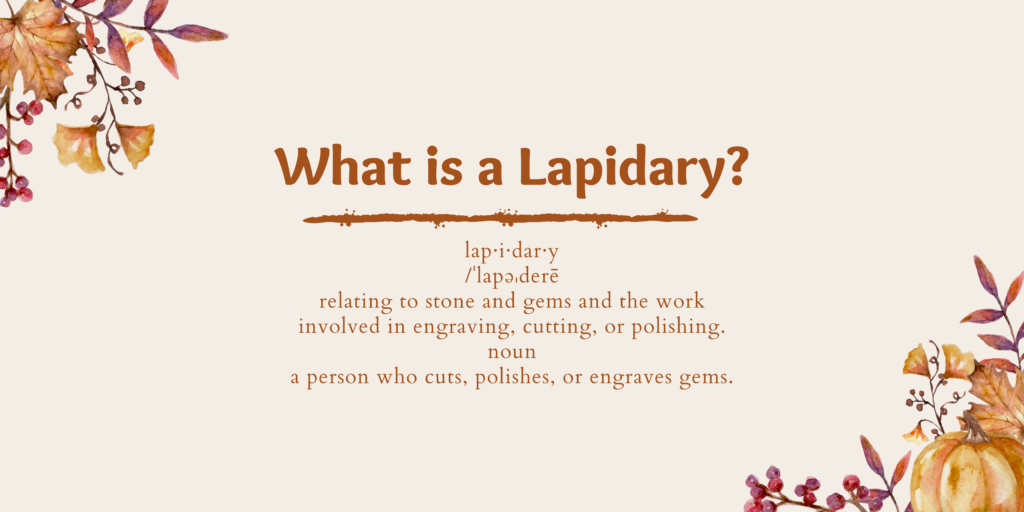
Lapidary doesn’t evoke an image in my mind. Does it for you? It even sounds, I don’t know – almost medicinal. But, it’s what we have to work with.
As an adjective, it pertains to stone and gems and the work involved in engraving, cutting, or polishing them. When used as a noun, it refers to a person who cuts, polishes, or engraves gems.
Also, a Lapidary practices the art of…lapidary. Doesn’t THAT sound special? A person who practices the art of medicine isn’t referred to as a medicine!
Scientists are further defined by their area of study, such as Rocket Scientist and Biologist. Or, Geologist!
There ARE several practices a Lapidary can specialize in. Diamond Cutters, as an example, do faceting work. Makers of stone knifeblades do flintknapping. Tumblers…tumble(mimicking nature as a river grinds stones to a smooth surface). Those who create the beautifully carved stones one sees in gift shops are practicing carving. And people like myself, who cut, shape and polish stones are….what? Cabochon Cutters? Nope. Just good old Lapidary. Not even Lapidarists. Though some DO allow this usage, I’m guessing Merriam (Webster, for you youngsters who use Google) would be wagging her index finger back and forth in the international symbol for “Ummm, no.”
Still wondering what a Lapidary is, and does? Here: take a look for yourself! To see more examples of stones, or cabochons as they are more properly called, take a look here to see examples which I’ve crafted.
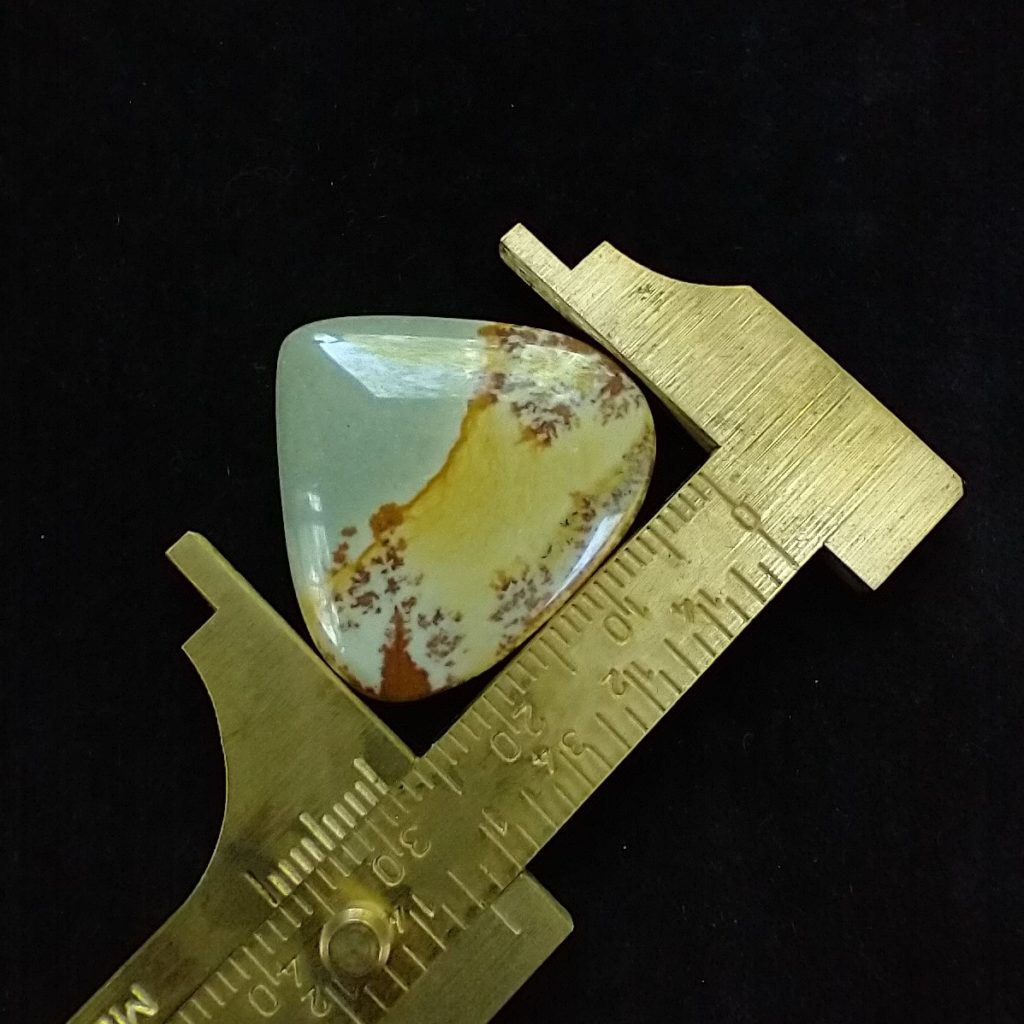
The art of lapidary lies in an attempt to create a cabochon(in my case) that is as perfectly formed an polished as possible. That requires impeccable symmetry in the doming, a bezel (the sides of the cut stone) that is of uniform height the whole way around, and no – NO – scratches remaining from the process of grinding from a flat shape through doming process, to finished work.
Not all stones are created equally, and some are more equal than others. Most obvious is the hardness of a type of stone. We’ve all heard that diamonds are the hardest of all, but where does that leave every other mineral? A system called the Mohs Scale of Hardness was developed by Frederich Mohs in 1822 with a range of 1 to 10; with Talc(originally used in baby powder, later shown to be cancerous) as the softest, and – you guessed it – diamond being a 10 out of 10.
My preference in stones are Picture Jaspers, as well as some Agates, which happen to be in the mid range of the Mohs scale, between about 6 and 7. I’ve cut softer material, such as Sonoran Dendritic which can vary in hardness depending on the specific type of material. Theoretically, the hardness is 6, but the stone shown below practically melted away as I began shaping it. I would have said it was much softer.
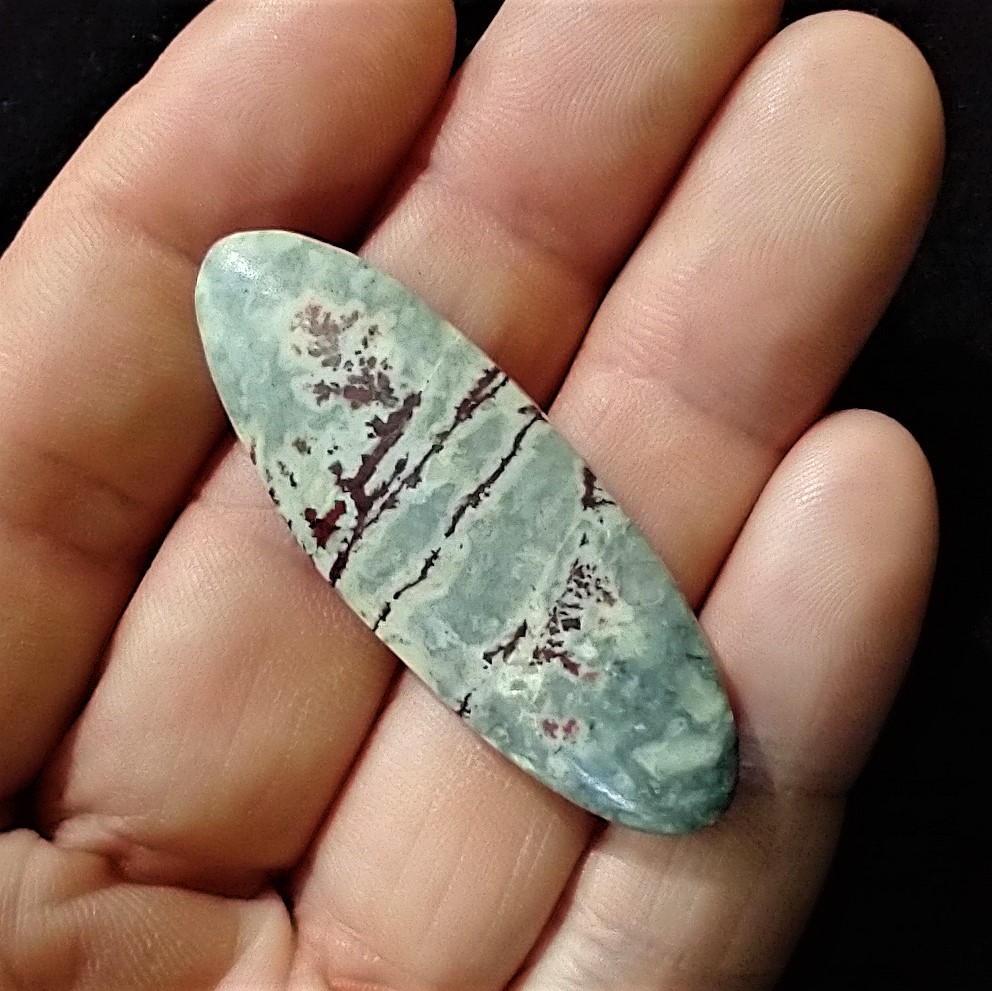
What are cabochons used for, once the Lapidary(that cursed term again!) finishes with them? Mostly, they are placed into metal settings for use in jewelry or other adornments.Traditionally here in the US, people would learn some level of silversmithing to incorporate their collections of pretty rocks into decorative pieces which they’d either sell of gift to lucky friends and family.
However, in the second half of the 20th Century, imported goods, both material for lapidary work and finished cabochons began to gain in accessibility, and jewelry crafters began using these much less expensive stones for their creative projects.
On the plus side, the range of interesting stones allows for creative people to focus on their jewelry making, and allows them to offer their work at a lower price, since the labor involved in cutting the stones is much less in the 3rd world countries where this work is most often done.
Regarding negative points, buyers of finished work often don’t realize why a piece that includes a stone cut in the states costs more than something comparative using a stone from another country. To be fair, the difference between *most* stateside cabochons and commercially processed stones from overseas is pretty clear when one takes the time to examine the stone. But to the untrained eye, the focus often doesn’t make it past “oooh, pretty!” with regards to the stone.
Do you like eye candy, in the form of rocks(Rock Candy – hahaha)? Let me show you a few more examples of cabs I have cut in the last few months.
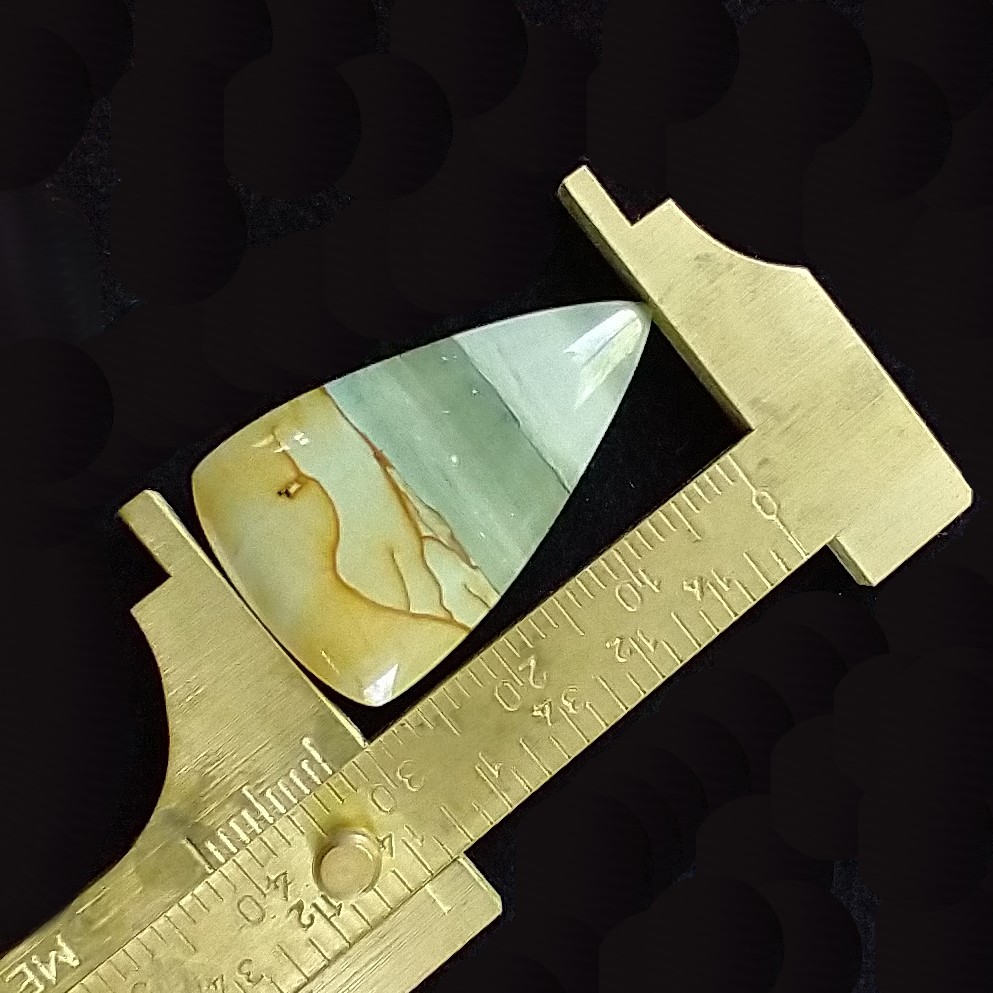
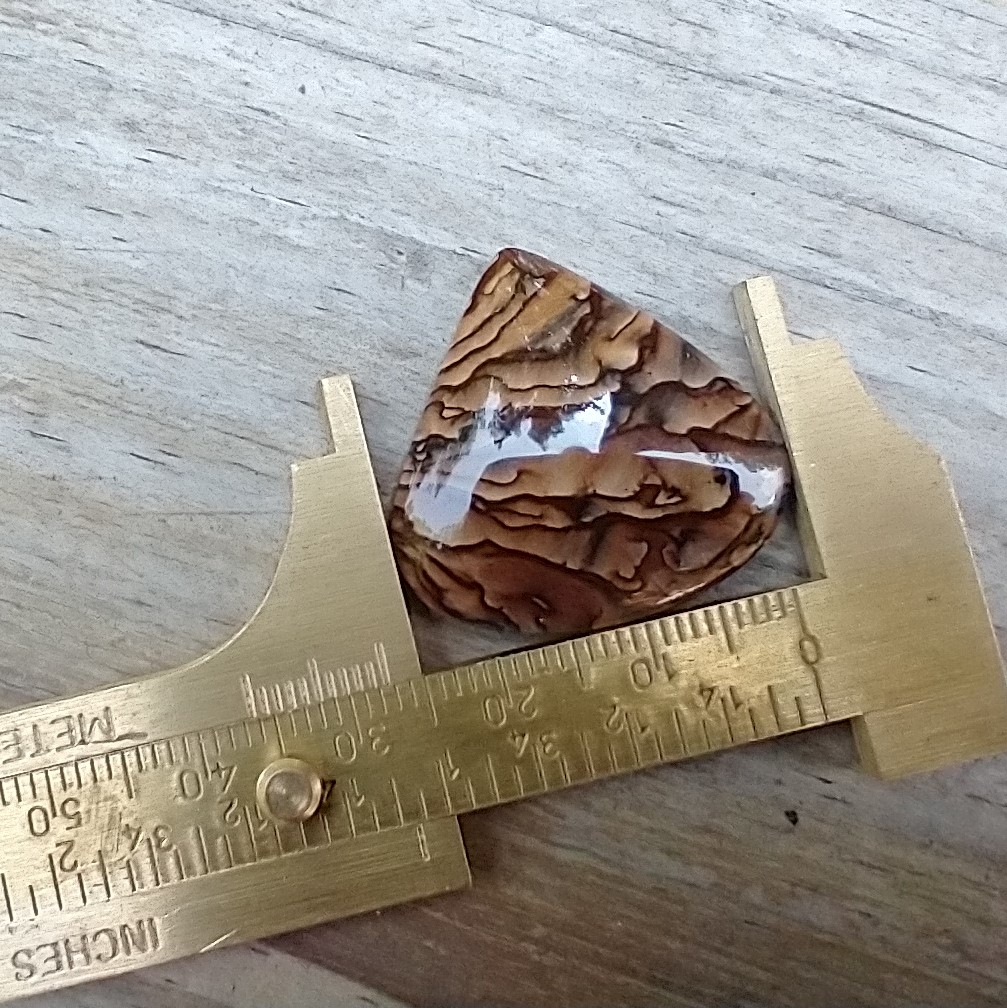
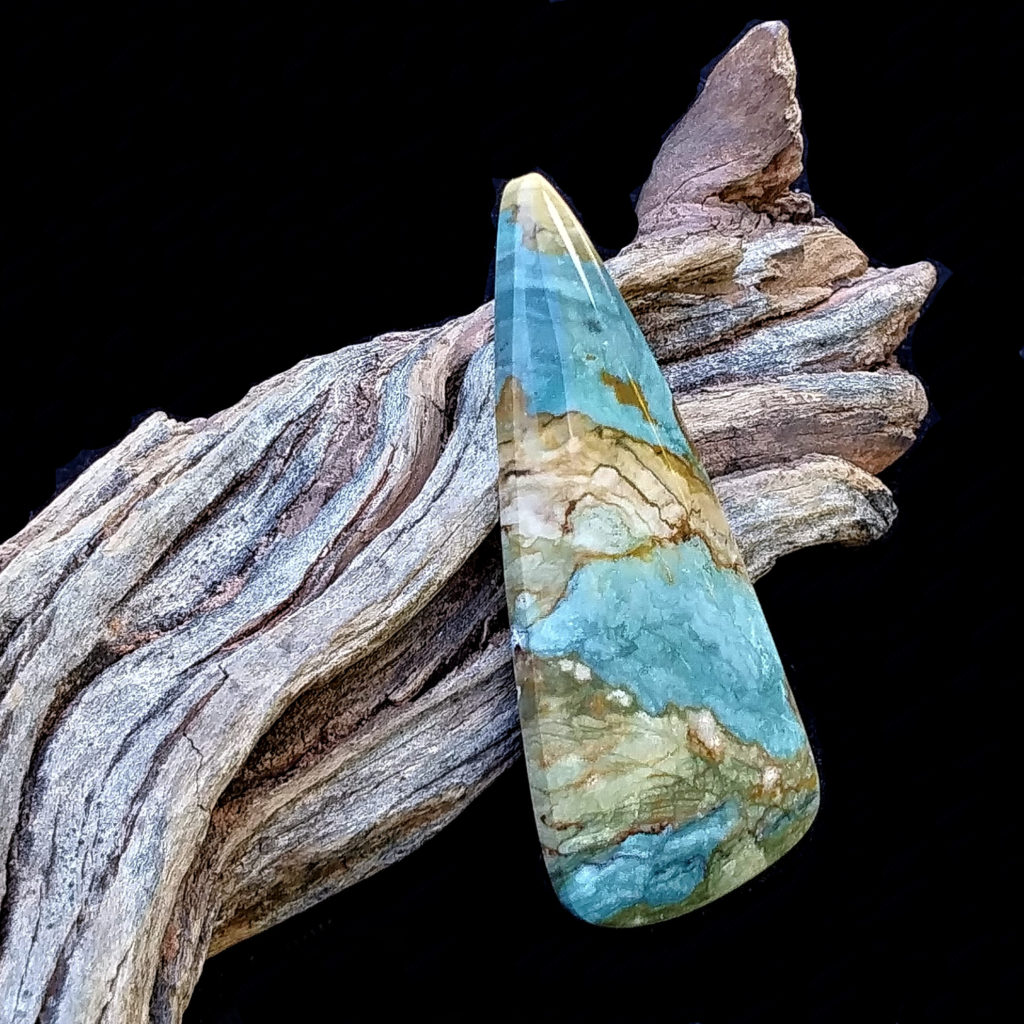
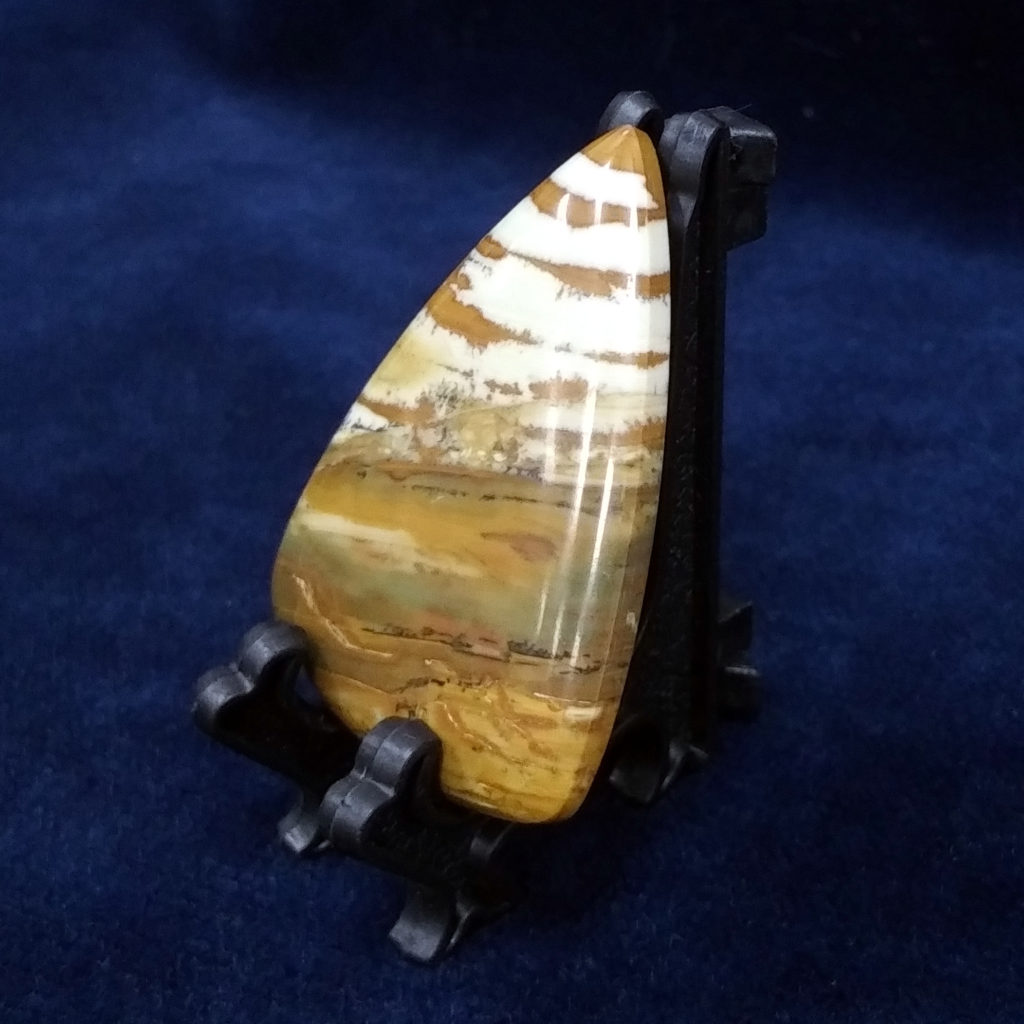
Here are some pictures showing my cabochons once I’ve put them into a jewelry setting.
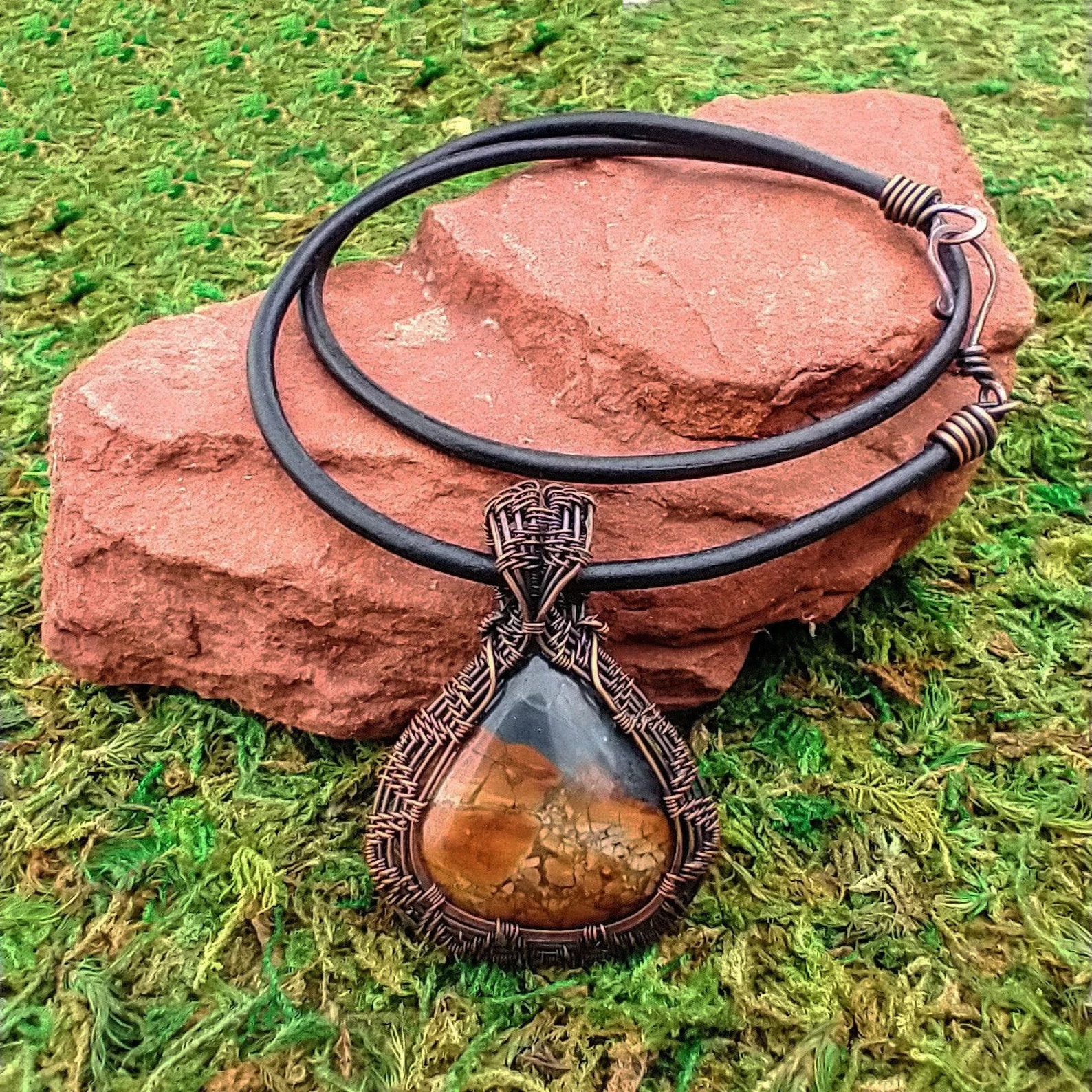
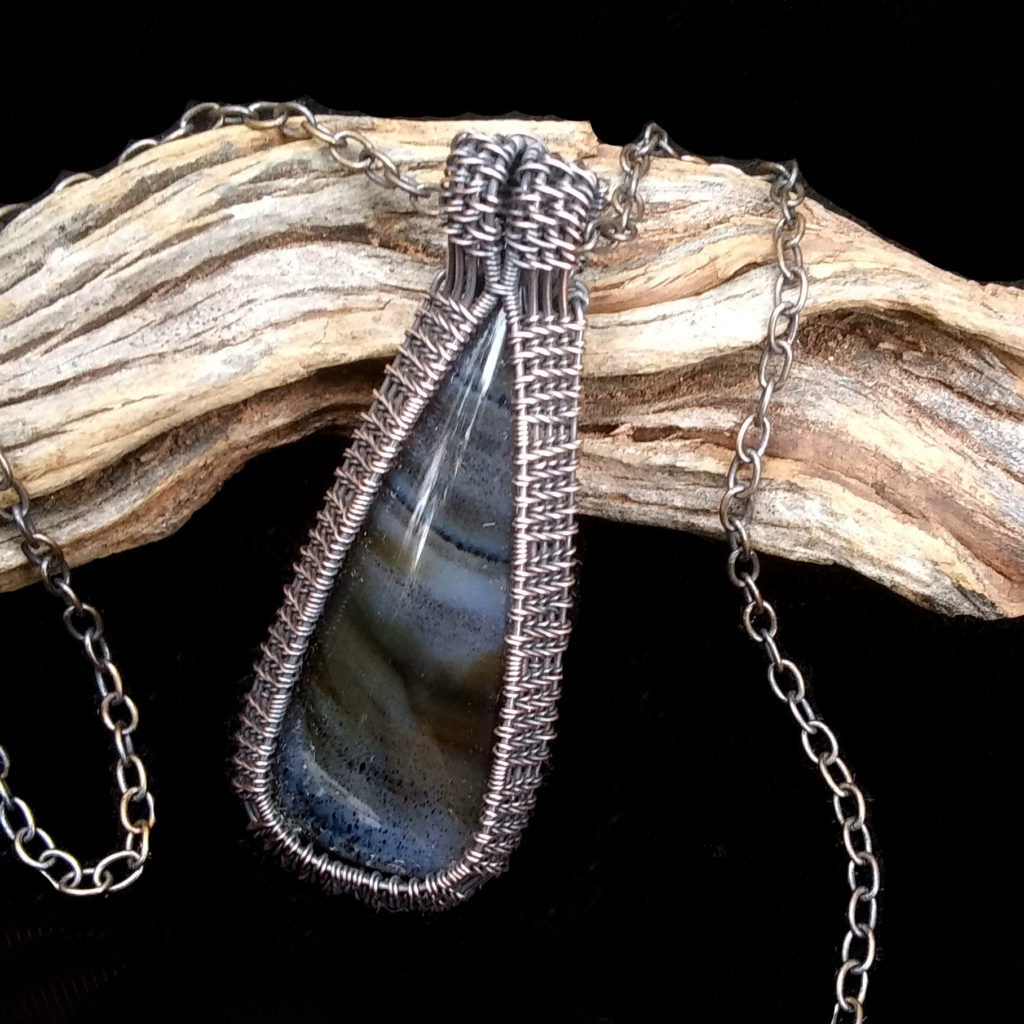
Leave a comment and tell me which ones are your favorites, and feel free to ask questions! I’ll do my best to answer if I can.

